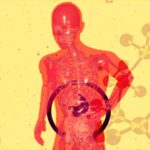When we think about guilt and shame, we usually imagine them as uncomfortable feelings that weigh on us after we do something wrong. But a new study published in eLife looks deeper into how these emotions actually push people toward certain kinds of altruistic behavior, and how our brains process them.
The researchers set out to understand the difference between guilt and shame not just in how they feel, but in what they make us do. They designed an experiment where people had to reflect on situations involving harm and responsibility. The idea was to see how much guilt or shame each situation brought up, and then to measure whether participants tried to “make things right” through compensation.
What they found is that guilt seems to be more strongly tied to action. When people felt guilty, they were more likely to compensate or repair the harm done. Shame was more sensitive to responsibility than guilt was, but it had a weaker influence on compensation compared to guilt. In simple terms: guilt makes us want to fix things, shame makes us more self-conscious.
To dig deeper, the team used computational modeling. They noticed that people don’t just process harm and responsibility separately; computational modeling suggested that participants integrated harm and responsibility in a quotient-like way, where responsibility scaled how much harm influenced emotion. This is similar to what psychologists call “diffusion of responsibility,” where people feel less guilty if they share the blame with others.
Brain scans added another layer to the story. Using fMRI, the researchers saw that certain brain areas lit up when people processed guilt and shame. For guilt, regions linked to fairness and value, like the insula and striatum, were more active. For shame, areas tied to understanding others’ perspectives, such as the temporoparietal junction and superior temporal sulcus, were more involved. On top of that, compensating because of shame seemed to rely more on the lateral prefrontal cortex, which is usually connected with self-control and decision-making.
What’s interesting here is how different the two emotions turned out to be. Both are moral emotions, both come up when we feel we’ve done wrong, but they follow different pathways in the brain and push us toward different responses. Guilt is action-oriented, about repairing harm. Shame is more about how we see ourselves in the eyes of others, and less about directly fixing what happened.
Guilt and shame shape everyday interactions, from family life to professional settings. By showing how these emotions are represented in the brain and linked to behavior, the study provides a foundation for future work that could guide how psychologists or educators think about encouraging accountability while limiting the risks of unhealthy guilt.
The researchers call this work a first step in mapping the neurocomputational basis of these emotions. And while it won’t erase the sting of guilt or shame in our daily lives, it does give us a clearer sense of what’s going on in the mind when we feel them, and why guilt, uncomfortable as it is, might be the emotion that pushes us to make amends.
Story Source: From cognition to compensation: Neurocomputational mechanisms of guilt-driven and shame-driven altruistic behavior, published in eLife.
Note: Content may be edited for style and length.







